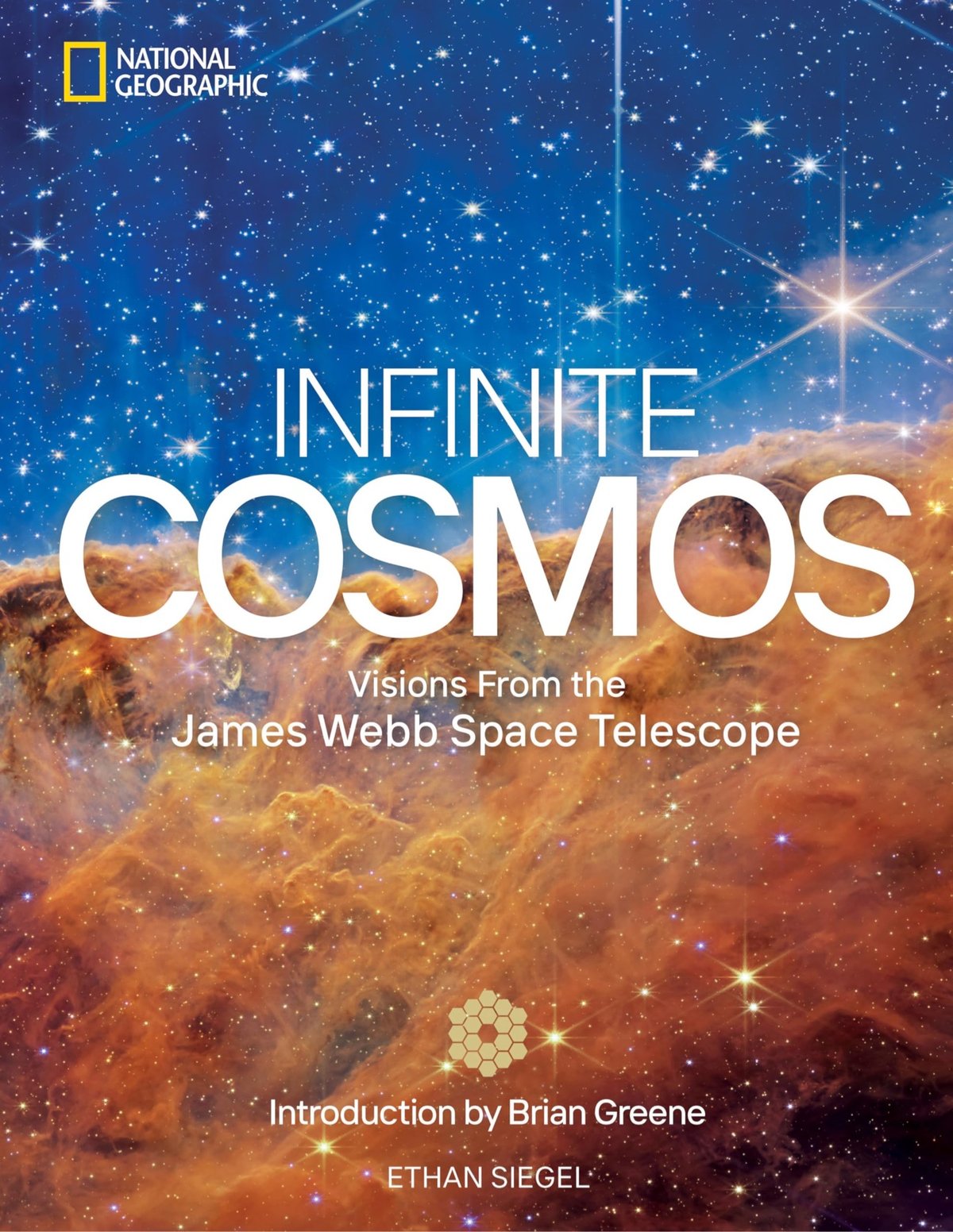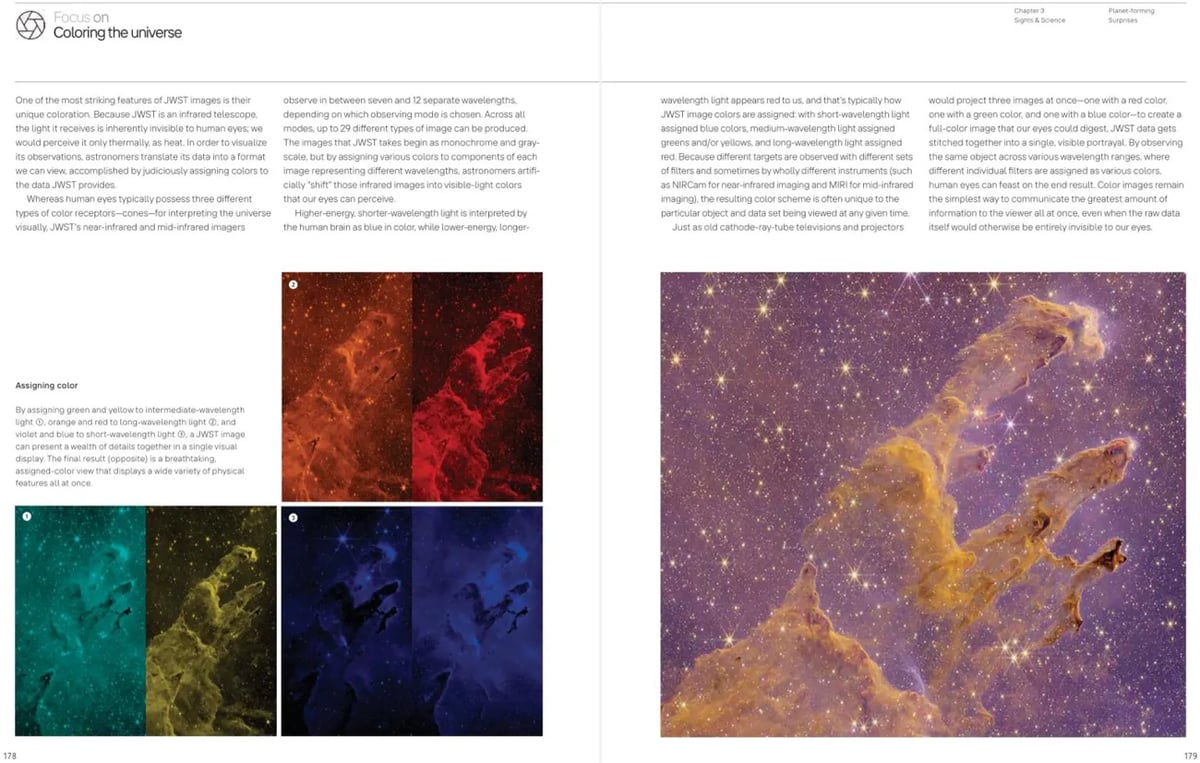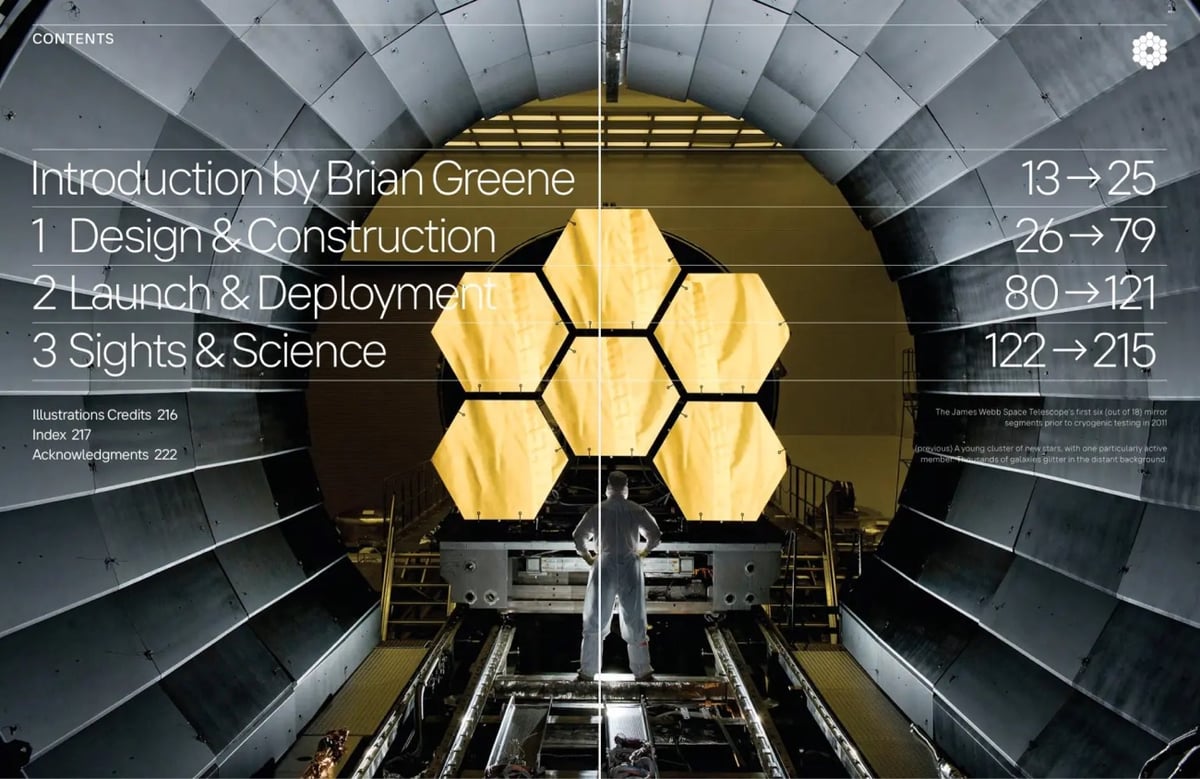Infinite Cosmos: Visions From the JW Space Telescope

Out today from National Geographic is Infinite Cosmos, a gorgeous-looking book by Ethan Siegel (intro by Brian Greene). It’s about the history of the JWST, humanity’s biggest ever space telescope, a machine that allows us to peer deeper & clearer into the universe than ever before, and some of the amazing results obtained through its use.

Siegel wrote a piece about the book for Big Think, which includes an excerpt. Gravitational lensing is so cool:
Even with its unprecedented capabilities, JWST’s views of the universe are still finite and limited. The faintest, most distant objects in the cosmos — including the very first stars of all — remain invisible even in the longest-exposure JWST images acquired to date. The universe itself offers a natural enhancement, however, that can reveal features that would otherwise remain unobservable: gravitational lensing.
Whenever a large amount of mass gathers together in one location, it bends and distorts the fabric of the surrounding space-time, just as the theory of general relativity dictates. As light from background objects even farther away passes close to or through that region of the universe, it not only gets distorted but also gets magnified and potentially bent, either into multiple images or into a complete or partial ring. The foreground mass behaves as a gravitational lens. The amount of mass and how it’s distributed affect the light passing through it, amplifying the light coming from those background sources.


Infinite Cosmos is available for purchase at Amazon and Bookshop.





Stay Connected